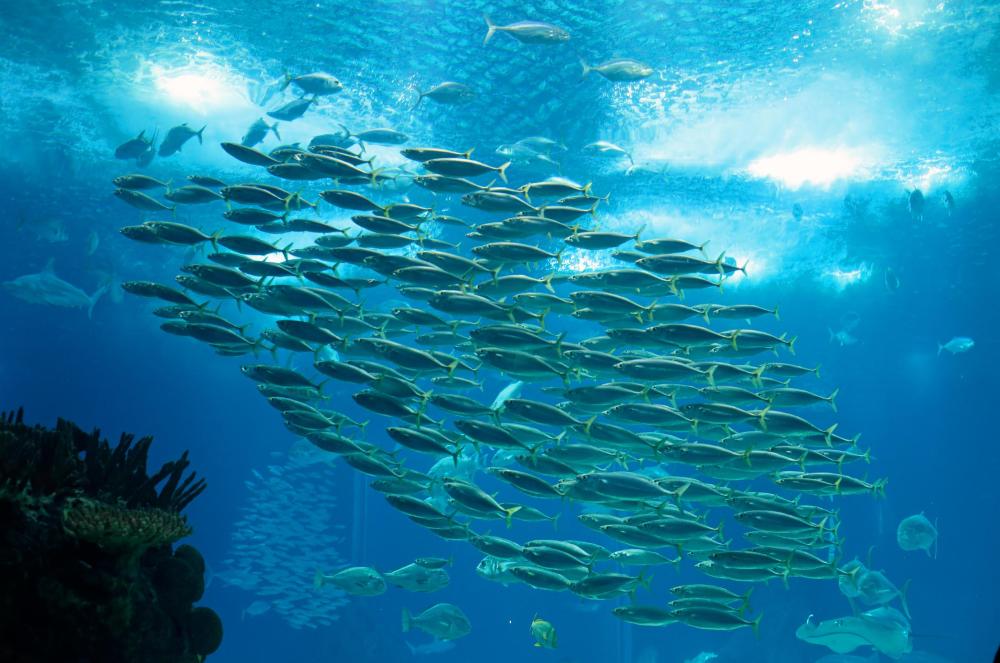What is a Continental Shelf?
 Mary McMahon
Mary McMahon
The continental shelf is an undersea extension of a continent that can stretch a great distance out to sea in some cases. Many nations have asserted mineral and land rights to their associated continental shelves, since this region of the ocean is rich in natural resources such as marine life. Minerals in this area are also significantly easier to extract than minerals on the floor of the ocean, since it is relatively shallow by comparison. By convention, many countries defend their continental shelves as territorial waters, since they are concerned about the exploitation of their natural resources.
There are actually several parts to a continental shelf. The first part is the shelf itself, which starts below the shoreline of a continent. The shelf slopes gently as it stretches towards the deeper part of the ocean, until it reaches a certain point and drops off sharply, causing the waters above to rapidly become much deeper. This drop is called the continental break, and it occurs uniformly at around 460 feet (140 meters) of depth. It has been theorized that the continental break may mark the former sea level of the world's oceans.

After the continental break, the shelf takes a sharp downward turn, creating a geological feature called the continental slope. This feature transitions into the continental rise, a deposit of sediments that forms as a result of river and stream run off from the neighboring continent. Beyond the continental rise, one finds the ocean floor, along with a host of fascinating plant and animal life that remains largely unexplored due to the inaccessibility of much of the ocean floor.

In some instances, the continental shelf is very short, as is the case in subduction zones where one tectonic plate is being sucked below another. A well known example can be found in the waters off the coast of Chile. In other cases, extension stretches for many miles (or kilometers) out to sea. The feature is often visible from overhead, if the viewer looks for a marked change in the color of the water that reflects a sudden change in depth.

A continental shelf is not necessarily flat. It may be marked with deep valleys and other geological features that may continue out to the abyssal plain, the deepest part of the ocean. The shelf is also covered in a thick layer of nutrient rich sediment that is deposited by rivers and streams. These nutrients support varied and diverse marine life including seaweeds, fish, and many microscopic organisms, like dinoflagellates and other plankton.
AS FEATURED ON:
AS FEATURED ON:














Discussion Comments
@ Arunil- The width of the continental shelf has to do with plate tectonics and plate boundaries. If you look at a map of the continental shelves, you will notice that they are narrowest around plate boundaries, especially subduction zones. They are thickest in the Polar Regions where there are no tectonic forces causing the plates to diverge and converge on one another.
They are also thick in regions where there are islands within a few hundred miles of shore and the shelves of these landmasses connect with the shelf of the continents. These regions around New Zealand, Japan, Indonesia, Madagascar and the Seychelles, the Caribbean, and the United Kingdom and northern Europe have bigger shelf seas for this reason.
Since these regions are less active seismically, there is less mass wasting and coastal subsidence to erode the coastal shelf. The result is a shelf break further away from shore.
So, you write that the continental break occurs when the shelf reaches about 460 feet in depth - but what determines when the shelf reaches that depth? What I mean is why does the shelf extend a relatively short distance in some cases (not including the subduction zones) but miles and miles in others?
Post your comments